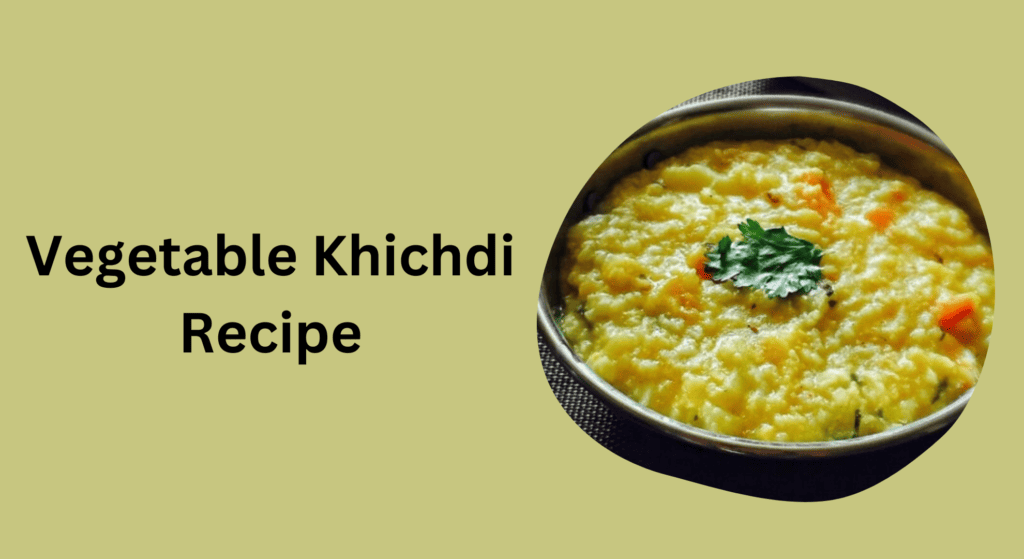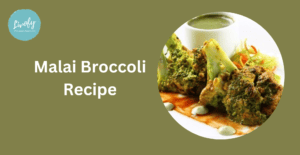About Vegetable Khichdi Recipe
The Vegetable Khichdi recipe is a one-pot comforting Indian recipe. It is made with a combination of rice, and lentils, and turns out to be healthy and delicious both.
This easy vegetable Khichdi recipe can be prepared with the selection of veggies you like and match your dietary needs. You can curate this vegetable khichdi recipe with green peas, carrots, and leafy vegetables with thick or running consistency. Beginners who are new to cooking can easily learn how to make vegetable Khichdi by following a few simple steps.
You can choose to prepare this easy vegetable Khichdi recipe in an open pot or pressure cooker as well. You just need to make sure the vegetables, rice and spices are cooked well.
| Time | Difficulty Level | Serves |
| 30 Minutes | Intermediate | 2-3 Persons |
Preparation For Vegetable Khichdi Recipe
To get started with the vegetable Khichdi recipe, follow these preparatory steps to make the Khichdi delicious and healthier;
- Rinse the Soak Rice and Dal mixture: Take the rice and any dal (usually split yellow moong dal or masoor dal) in a bowl and rinse them thoroughly under running water. This helps remove any dirt or impurities. Soak them at least for an hour before cooking.
- Chop the vegetables: While the rice and lentils are soaking, wash, peel, and chop the vegetables into small, uniform pieces. Common vegetables used in vegetable khichdi include carrots, peas, bell peppers, and potatoes. Ensure that the vegetables are cut into bite-sized pieces.
- Gather the spices and seasonings: Collect the necessary spices and seasonings for the khichdi. Common spices include cumin seeds, mustard seeds, turmeric powder, asafoetida, and garam masala. Have salt and pepper ready as well.
Ensure that you always rinse and soak the rice and dal mixture before starting with the vegetable khichdi recipe.
Ingredients For Vegetable Khichdi
Let’s look at the required ingredients to make this easy vegetable Khichdi recipe. Please note that the quantity is mentioned for serving 2-3 persons, you can always change the amount according to the servings.
- 1/2 cup rice
- 1/4 cup split yellow moong dal or masoor dal (red lentils)
- Assorted vegetables (e.g., 1 carrot, 1/2 cup peas, 1/2 cup cauliflower florets, 1 bell pepper, 1 small potato)
- 1 tablespoon oil or ghee (clarified butter)
- 1 teaspoon cumin seeds
- 1/2 teaspoon mustard seeds
- 1/2 teaspoon turmeric powder
- A pinch of asafoetida (optional)
- 1 teaspoon garam masala
- Salt to taste
- Pepper to taste
- Water for cooking
- Fresh coriander leaves for garnish
Method/Steps To Cook Vegetable Khichdi
Wondering how to make Vegetable Khichdi from scratch? Here’s a precise guide step-wise guide on how to make Vegetable Khichdi;
Step-1: Rinse the rice and lentils: Take the rice and lentils in a bowl and rinse them thoroughly under running water. Set them aside.
Step-2: Soak the rice and lentils (optional): If you prefer, soak the rinsed rice and lentils in water for about 30 minutes. This step aids in digestion and ensures even cooking. Drain the water before using.
Step-3: Prepare the vegetables: Wash, peel, and chop the vegetables into small, bite-sized pieces. Keep them aside.
Step-4: Heat oil or ghee: In a large pot or pressure cooker, heat the oil or ghee over medium heat.
Step-5: Temper the spices: Add cumin seeds and mustard seeds to the hot oil or ghee. Let them sizzle for a few seconds until they start to crackle.
Step-6: Sauté the vegetables: Add the chopped vegetables to the pot and sauté them for 2-3 minutes until they start to soften.
Step-7: Add spices: Add turmeric powder, asafoetida (if using), garam masala, salt, and pepper. Stir well to coat the vegetables with the spices.
Step-8: Cook rice and lentils: Add the rinsed (or soaked and drained) rice and lentils to the pot. Mix everything together to combine the ingredients.
Step-9: Add water: Pour in enough water to cover the rice and lentils. For a slightly grainy consistency, use approximately 2 cups of water. Adjust the quantity according to your desired consistency.
Step-10: Simmer: Cover it with a lid and simmer on low heat until the khichdi is cooked through (approximately 20-25 minutes), stirring occasionally to prevent sticking.
Step-11: Check the consistency: Once the khichdi is cooked, check the consistency. If it is too thick, add a little more hot water and mix well.
Step-12: Garnish and serve: Remove the pot from heat. Garnish the khichdi with freshly chopped coriander leaves. Serve it hot as a standalone dish or with yoghurt, pickles, or papadum.
Enjoy the delicious and nutritious Vegetable Khichdi recipe!
How To Make Instant Vegetable Khichdi At Home (Step Wise)
If you’re looking to recall this easy vegetable khichdi recipe, here’s a quick guide on how to make vegetable khichdi recipe;
- Rinse and soak rice and split yellow moong dal.
- In a pressure cooker, heat oil/ghee and add cumin seeds, mustard seeds
- Sauté the vegetables for 2-3 minutes.
- Add turmeric powder, a pinch of asafoetida (optional), garam masala, salt, and pepper to taste.
- Drain the soaked rice and lentils and add them to the cooker. Mix well.
- Add enough water to cover the rice and lentils.
- Close the lid and pressure cook for 2-3 whistles (or simmer in a covered pot for 20-25 minutes).
Enjoy your Instant Vegetable Khichdi recipe!
Any Alternate Way To Make Vegetable Khichdi
If you’re wondering about an alternate way to make this easy vegetable khichdi recipe, here is an alternate way to make Vegetable Khichdi recipe using a rice cooker or an electric pressure cooker. Here’s the step-by-step guide:
- Rinse 1/2 cup rice and 1/4 cup split yellow moong dal (optional) under running water and drain.
- Chop assorted vegetables (1 carrot, 1/2 cup peas, 1/2 cup cauliflower florets, 1 bell pepper, 1 small potato) into small pieces.
- In the rice cooker or electric pressure cooker, add the rinsed rice, lentils, and chopped vegetables.
- Add 1 tbsp oil/ghee, 1 tsp cumin seeds, 1/2 tsp mustard seeds, 1/2 tsp turmeric powder, a pinch of asafoetida (optional), 1 tsp garam masala, salt, and pepper to taste. Mix well.
- Add enough water (approximately 2 cups) to cover the rice and vegetables.
- If using a rice cooker, close the lid and cook the khichdi using the regular rice cooking setting. If using an electric pressure cooker, close the lid and cook on the rice setting or set it manually for 3-4 minutes.
- Once the cooking cycle is complete, allow the pressure to release naturally in the electric pressure cooker or let the khichdi sit in the rice cooker for a few minutes.
- Open the lid, check the consistency, and adjust with hot water if needed.
- Garnish with fresh coriander leaves.
- Serve hot and enjoy the delicious Vegetable Khichdi!
Using a rice cooker or electric pressure cooker offers a convenient way to make a Vegetable Khichdi recipe with minimal monitoring. Just set it up and let it cook while you attend to other tasks.
Nutritional Value in Vegetable Khichdi
| Serving Size | 1 Plate |
| Protein | 8.9 g |
| Carbohydrates | 39.8 g |
| Fats | 2.5 g |
| Calories | 218 |
Pro Tips to Make the Best Vegetable Khichdi at Home
Wondering how to make Vegetable Khichdi recipe perfectly at home? Here are a few tips on how to make Vegetable Khichdi like a pro;
- Use a combination of rice and lentils: Opt for a mix of rice and lentils like split yellow moong dal or masoor dal to enhance the flavour and nutritional value of the khichdi.
- Soak the rice and lentils: Soaking the rice and lentils for 30 minutes before cooking can help in easy digestion and even cooking. However, if you’re short on time, you can skip this step.
- Sauté the spices: Before adding vegetables, sauté the cumin seeds and mustard seeds in oil or ghee until they crackle. This releases their flavours and adds a delightful aroma to the khichdi.
- Chop vegetables uniformly: Chop the vegetables into small, uniform pieces to ensure they cook evenly and blend well with the rice and lentils.
- Adjust water quantity: The quantity of water can impact the consistency of the khichdi. For a more porridge-like texture, add slightly more water. If you prefer a drier khichdi, reduce the amount of water.
Health Benefits of Vegetable Khichdi
As mentioned, this easy Vegetable Khichdi recipe is healthy and equally delicious as well, let’s look at the health benefits in depth;
Balanced nutrition: Vegetable khichdi combines rice, lentils, and vegetables, providing a good balance of carbohydrates, proteins, fibre, vitamins, and minerals.
High in fibre: The inclusion of lentils and vegetables in khichdi increases its fibre content, aiding digestion and promoting a healthy digestive system.
Protein-rich: Lentils used in khichdi are an excellent source of plant-based protein, which is essential for muscle repair, growth, and overall health.
Packed with vitamins and minerals: The variety of vegetables in khichdi contributes to a range of essential vitamins and minerals, promoting overall well-being.
Easily digestible: The combination of rice and lentils in khichdi makes it gentle on the stomach and easy to digest, making it an ideal meal for those with digestive issues.
Tips To Limit The Calorie In Vegetable Khichdi
While this dish is healthy, there’s still a scope to limit the calorie content. Here’s how to make Vegetable Khichdi recipe with low calories;
- Use brown rice or quinoa: Swap white rice with brown rice or quinoa to increase the fibre content and promote a slower release of energy, keeping you full for longer.
- Limit added fats: While garnishing, use a moderate amount of oil or ghee. Instead of deep-frying garnishes, consider roasting or air-frying them for a healthier option.
- Watch the accompaniments: Pay attention to the sides and accompaniments served with khichdi. Opt for healthier choices like plain yoghurt, fresh salads, or homemade pickles to control calorie intake.
- Include more vegetables: Increase the proportion of vegetables in the khichdi to add volume and nutritional value without significantly increasing calorie content.
FAQs
What’s different in the Vegetable Khichdi Recipe by Livofy?
We at Livofy, suggest how to make Vegetable Khichdi that is suitable for all kinds. If you’re looking at the recipe as a beginner, or as an expert recalling the recipe. Also, we suggest ways to make vegetable khichdi recipe alternatively that is equally delicious and healthy.
What is the cooking time for Vegetable Khichdi?
It usually takes around 2-3 whistles in the cooker and approximately 20-25 minutes on simmer in a covered pot.
Is Vegetable Khichdi Healthy?
Yes, Vegetable Khichdi is generally considered healthy. It is a nutritious dish that provides a balanced combination of rice, lentils, and vegetables. It is rich in fiber, protein, vitamins, and minerals. The use of vegetables adds to its nutritional value, making it a wholesome and nourishing meal.
What is the right time to have Vegetable Khichdi?
Vegetable Khichdi can be consumed at any time of the day. It can be enjoyed as a breakfast, lunch, or dinner. It is often considered a light and easy-to-digest meal, during times of illness or when a lighter meal is preferred.
Are there any side effects of eating Vegetable Khichdi?
Eating Vegetable Khichdi does not have any significant side effects. It is a wholesome and nutritious dish made with rice, lentils, and vegetables.
How many calories does Vegetable Khichdi have?
On average, a serving of Vegetable Khichdi (approximately 1 cup) can range from 250 to 350 calories. The exact calorie count may also depend on factors like the quantity of oil or ghee used in cooking.
How to make Vegetable Khichdi interesting?
Here’s how to make vegetable Khichdi interesting- Try adding spices like cinnamon, cardamom, or cloves for a hint of warmth and aroma. You can also incorporate a teaspoon of ginger-garlic paste or a dash of lemon juice for a tangy twist
How to make Vegetable Khichdi healthier?
Here’s how to make vegetable Khichdi healthier- consider using brown rice or quinoa instead of white rice to increase the fibre content. You can also reduce the amount of oil or ghee used for cooking or opt for healthier cooking alternatives like cooking spray or non-stick cookware.









